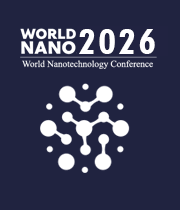Title : Efficacy of nanoparticle-based localized immunomodulation to reduce graft-versus-host disease in murine models of bone marrow transplantation: A systematic review
Abstract:
Background and Aim:
Bone marrow transplantation (BMT) -accounts for 73.8% of all the transplants- is a cornerstone therapy for various haematological disorders. Of grave concern, it follows a life-threatening complication of acute graft vs host disease (aGVHD) with an incidence of 30-60%. The standard conventional immunosuppressive therapies, acting systemically, are frequently associated with toxicity, infections, and 70% of non-responding patient. A novel, highly targeted nanoparticle-based strategy, while being explored in solid organ transplantation, remains under-investigated in context of BMT. This systematic review aims to evaluate the efficacy of NP-based strategies to mitigate aGVHD following BMT.
Methods:
A systematic search was conducted using PubMed, Cochrane Library, and Science Direct from April 23, 2001, to August 13, 2024, for propensity-matched studies. Following key words were applied: Bone Marrow Transplantation, Graft vs Host Disease, Nanoparticles, and Murine model. Studiesa evaluating the efficacy of NP-based therapies to mitigate GVHD severity in standard murine models of experimentally induced GVHD with placebos or controls were included. Non-murine model studies and gray literature were excluded. Data was meticulously extracted by two independent reviewers. Study quality was assessed using SYRCLE Risk of Bias tool for animal studies. Descriptive analysis was performed as meta-analysis was not possible due to heterogeneous data.
Results:
Following PRISMA 2020 guidelines, 66 studies were retrieved and 15 were included with n/group = 2-30; M/F mice, 6-12 weeks of age, housed under sterile conditions, with varying NP interventions and varying doses were given through IV/IP routes. Mean follow-up duration was 48 days. Comparison was made either with placebos or controls. Overall, risk of bias was moderate. NP treatment lowered clinical GVHD scores by 90%(p<0.001 for ≈ 40%), prolonged survival rates by 93%(p<0.001 for ≈ 21%), lower histopathological tissue damage scores in the liver (90%, p<0.001 for ≈ 20%),), intestine (100%, p<0.001 for ≈ 20%), skin (83%, p<0.001 for ≈ 17% ) and inflammatory cytokines was lowered by 70%( p<0.01 for ≈ 30%). Highest cumulative efficacy index is achieved in survival rates domain. Rx3 showed maximum efficacy across all the domains.
Conclusion:
NPs therapy has a promising efficacy in mitigating GVHD with limitations of reliance on animal model studies and heterogeneity in BMT domain. Using FDA approved nanoparticles with a focus on high quality pre-clinical studies each following specific protocol is needed. Characterization of NPs could help enhance its efficacy. This could be a best way forward for optimization towards clinical trials.



